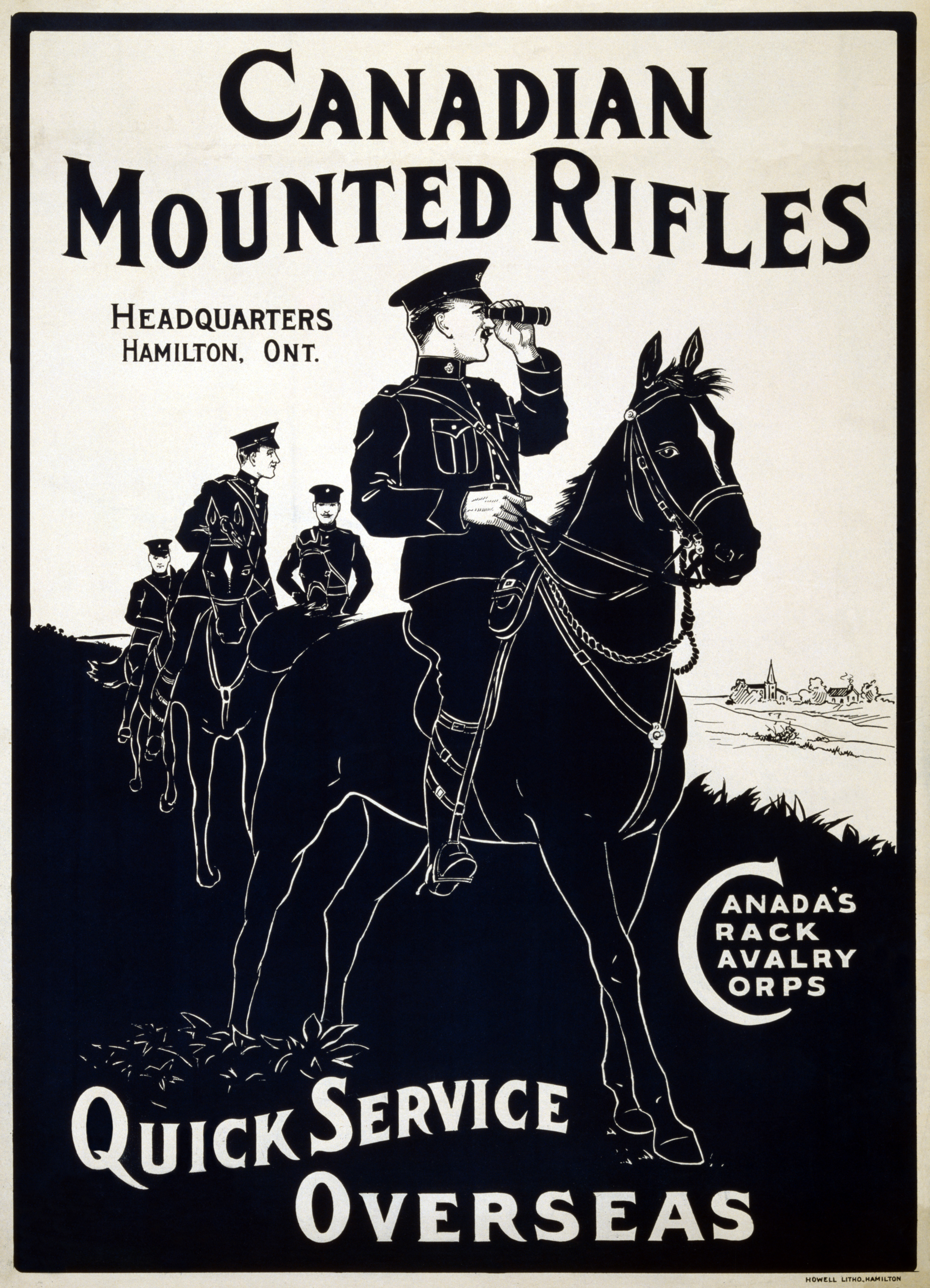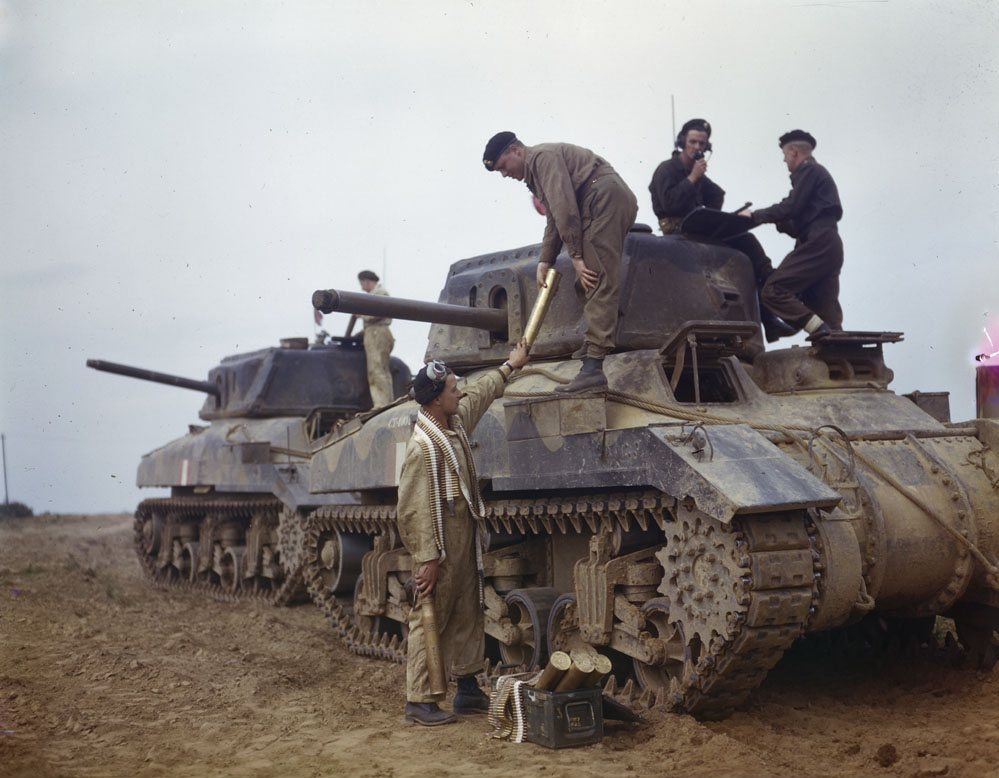|
British Columbia Dragoons
The British Columbia Dragoons (BCD) is a Primary Reserve armoured warfare, armoured reconnaissance regiment of the Canadian Army. It is based in Kelowna and Vernon, British Columbia, and is part of 3rd Canadian Division's 39 Canadian Brigade Group. Detachments *Regimental Headquarters (Kelowna) *A Squadron (Vernon, British Columbia, Vernon) *B Squadron (Kelowna) Lineage The British Columbia Dragoons * Originated on 1 April 1911, in Vernon, British Columbia, as one of two four-squadron regiments designated the ''British Columbia Horse''. * Reorganized on 1 December 1911, as the ''1st Regiment, British Columbia Horse''. * Redesignated on 15 April 1912, as the ''30th Regiment, British Columbia Horse''. * Redesignated on 15 March 1920, as ''The British Columbia Mounted Rifles''. * Redesignated on 15 March 1929, as ''The British Columbia Dragoons''. * Redesignated on 11 February 1941, as the ''2nd (Reserve) Regiment, The British Columbia Dragoons''. * Redesignated on 1 April 1941 ... [...More Info...] [...Related Items...] OR: [Wikipedia] [Google] [Baidu] |
Canadian Army
The Canadian Army (french: Armée canadienne) is the command responsible for the operational readiness of the conventional ground forces of the Canadian Armed Forces. It maintains regular forces units at bases across Canada, and is also responsible for the Army Reserve, the largest component of the Primary Reserve. The Army is headed by the concurrently held Commander of the Canadian Army and Chief of the Army Staff, who is subordinate to the Chief of the Defence Staff. The Army is also supported by 3,000 civilian employees from the civil service. Formed in 1855, as the Active Militia, in response to the threat of the United States to the Province of Canada after the British Garrison left for the Crimean War. This Militia was later split into the Permanent Active Militia and the Non-Permanent Active Militia. Finally, in 1940, an Order in Council was issued to rename the active militias to the Canadian Army. On 1 April 1966, prior to the unification of the Canadian Arm ... [...More Info...] [...Related Items...] OR: [Wikipedia] [Google] [Baidu] |
Library And Archives Canada
Library and Archives Canada (LAC; french: Bibliothèque et Archives Canada) is the federal institution, tasked with acquiring, preserving, and providing accessibility to the documentary heritage of Canada. The national archive and library is the fifth largest library in the world. The LAC reports to the Parliament of Canada through the Minister of Canadian Heritage. The LAC traces its origins to the Dominion Archives, formed in 1872, and the National Library of Canada, formed in 1953. The former was later renamed as the Public Archives of Canada in 1912, and the National Archives of Canada in 1987. In 2004, the National Archives of Canada and the National Library of Canada were merged to form Library and Archives Canada. History Predecessors The Dominion Archives was founded in 1872 as a division within the Department of Agriculture tasked with acquiring and transcribing documents related to Canadian history. In 1912, the division was transformed into an autonomous organiz ... [...More Info...] [...Related Items...] OR: [Wikipedia] [Google] [Baidu] |
Canadian Mounted Rifles
Canadian Mounted Rifles was part of the designation of several mounted infantry units in Canada in the late 19th and early 20th centuries. Units of the Permanent Active Militia Units formed for the Second Boer War Independent squadrons of the Non-Permanent Active Militia Units of the Canadian Expeditionary Force of the First World War See also * List of mounted regiments in the Canadian Expeditionary Force * List of infantry battalions in the Canadian Expeditionary Force *Mounted Infantry * Canadian Militia *History of the Canadian Army * Permanent Active Militia *Non-Permanent Active Militia * Military history of Canada during World War I * Australian Light Horse * Imperial Yeomanry * Otter Commission The Otter Commission, or Otter Committee, was established after the First World War to tackle a problem created by the chaotic mobilization of the Canadian Expeditionary Force. In 1919 units of the CEF, intended as a wartime expeditionary force, ret ... Re ... [...More Info...] [...Related Items...] OR: [Wikipedia] [Google] [Baidu] |
Cambrai
Cambrai (, ; pcd, Kimbré; nl, Kamerijk), formerly Cambray and historically in English Camerick or Camericke, is a city in the Nord department and in the Hauts-de-France region of France on the Scheldt river, which is known locally as the Escaut river. A sub-prefecture of the department, Cambrai is a town which had 32,501 inhabitants in 2018. It is in the heart of the urban unit of Cambrai with 46,772 inhabitants. Its functional area, a more extensive range, included 94,576 inhabitants in 2018.Comparateur de territoire: Aire d'attraction des villes 2020 de Cambrai (108), Unité urbaine 2020 de Cambrai (59403), Commune de Cambrai (59122) INSEE With |
John MacGregor (VC)
John MacGregor VC MC & Bar DCM ED (1 February 1889 – 9 June 1952) was a Scottish-Canadian soldier. MacGregor was a recipient of the Victoria Cross, the highest and most prestigious award for gallantry in the face of the enemy that can be awarded to British and Commonwealth forces. MacGregor served in the Canadian army in both world wars. Details Macgregor was born in Cawdor near Nairn, Scotland in 1889 and moved to Canada in 1909. He served in the army from 1915 to 1919. MacGregor was 29 years old, and a temporary captain in the 2nd Regiment, Canadian Mounted Rifles, Canadian Expeditionary Force during the First World War when the following deed during the Battle of the Canal du Nord took place for which he was awarded the Victoria Cross. During the period 29 September/3 October 1918 near Cambrai, France, Captain MacGregor acted with most conspicuous bravery and leadership. He led his company under intense fire, and although wounded, located and put out of action ene ... [...More Info...] [...Related Items...] OR: [Wikipedia] [Google] [Baidu] |
Western Front (World War I)
The Western Front was one of the main theatres of war during the First World War. Following the outbreak of war in August 1914, the German Army opened the Western Front by invading Luxembourg and Belgium, then gaining military control of important industrial regions in France. The German advance was halted with the Battle of the Marne. Following the Race to the Sea, both sides dug in along a meandering line of fortified trenches, stretching from the North Sea to the Swiss frontier with France, which changed little except during early 1917 and in 1918. Between 1915 and 1917 there were several offensives along this front. The attacks employed massive artillery bombardments and massed infantry advances. Entrenchments, machine gun emplacements, barbed wire and artillery repeatedly inflicted severe casualties during attacks and counter-attacks and no significant advances were made. Among the most costly of these offensives were the Battle of Verdun, in 1916, with a combined 700 ... [...More Info...] [...Related Items...] OR: [Wikipedia] [Google] [Baidu] |
2nd Battalion, Canadian Mounted Rifles
The 2nd Canadian Mounted Rifles Battalion, (known colloquially as the 2nd Battalion, CMR or simply 2 CMR) was authorized on 7 November 1914 as the 2nd Regiment, Canadian Mounted Rifles, CEF. The battalion recruited in Victoria and Vernon, British Columbia and was mobilized in Victoria.Meek, John F. ''Over the Top! The Canadian Infantry in the First World War.'' Orangeville, Ont.: The Author, 1971. An earlier incarnation was raised for Boer War. Boer War In November 1901, the British government requested from the Canadian government a four-squadron regiment of mounted rifles for the Boer War.Canada & The South African War, 1899-1902, Canadian War Museum Canadian Department of Militia and Defence equipped and trained the unit, while the British paid its costs. The majority of the officers and at least a quarter of the men had previously served in South Africa, including its commander Lieutenant-Colonel T.D.B. Evans. On 31 March the unit fought as part of an outnumbered British forc ... [...More Info...] [...Related Items...] OR: [Wikipedia] [Google] [Baidu] |
Great War
World War I (28 July 1914 11 November 1918), often abbreviated as WWI, was one of the deadliest global conflicts in history. Belligerents included much of Europe, the Russian Empire, the United States, and the Ottoman Empire, with fighting occurring throughout Europe, the Middle East, Africa, the Pacific, and parts of Asia. An estimated 9 million soldiers were killed in combat, plus another 23 million wounded, while 5 million civilians died as a result of military action, hunger, and disease. Millions more died in genocides within the Ottoman Empire and in the 1918 influenza pandemic, which was exacerbated by the movement of combatants during the war. Prior to 1914, the European great powers were divided between the Triple Entente (comprising France, Russia, and Britain) and the Triple Alliance (containing Germany, Austria-Hungary, and Italy). Tensions in the Balkans came to a head on 28 June 1914, following the assassination of Archduke Franz F ... [...More Info...] [...Related Items...] OR: [Wikipedia] [Google] [Baidu] |
Vancouver Island
Vancouver Island is an island in the northeastern Pacific Ocean and part of the Canadian province of British Columbia. The island is in length, in width at its widest point, and in total area, while are of land. The island is the largest by area and the most populous along the west coasts of the Americas. The southern part of Vancouver Island and some of the nearby Gulf Islands are the only parts of British Columbia or Western Canada to lie south of the 49th parallel. This area has one of the warmest climates in Canada, and since the mid-1990s has been mild enough in a few areas to grow Mediterranean crops such as olives and lemons. The population of Vancouver Island was 864,864 as of 2021. Nearly half of that population (~400,000) live in the metropolitan area of Greater Victoria, the capital city of British Columbia. Other notable cities and towns on Vancouver Island include Nanaimo, Port Alberni, Parksville, Courtenay, and Campbell River. Vancouver Island is th ... [...More Info...] [...Related Items...] OR: [Wikipedia] [Google] [Baidu] |
British Columbia Hussars
The British Columbia Hussars was a light cavalry regiment of the Non-Permanent Active Militia of the Canadian Militia (now the Canadian Army). In 1939, the regiment was converted from light armour to artillery. Lineage * Originated on 1 April 1908, as the ''British Columbia Horse''. * Reorganised on 1 December 1911, into two separate regiments: the ''1st Regiment, British Columbia Horse'' (now The British Columbia Dragoons) and the ''2nd Regiment, British Columbia Horse''. * Redesignated on 15 April 1912, as the ''31st Regiment, British Columbia Horse''. * Redesignated on 1 November 1920, as the ''5th British Columbia Light Horse''. * Redesignated on 15 August 1932, as the ''British Columbia Hussars''. * Amalgamated on 15 December 1936, with the Headquarters and B Company of the ''11th Machine Gun Battalion, CMGC'', and redesignated as the ''British Columbia Hussars (Armoured Car)''. * Converted on 15 May 1939, from light armour to artillery and redesignated as the ''1st Searc ... [...More Info...] [...Related Items...] OR: [Wikipedia] [Google] [Baidu] |
Royal Canadian Armoured Corps
The Royal Canadian Armoured Corps (RCAC; french: links=no, Corps blindé royal canadien) is the armoured corps within the Canadian Army, including 3 Regular and 18 Reserve Force regimentsThe Regiments and Corps of the Canadian Army (Queen's Printer, 1964) as well as the Royal Canadian Armoured Corps School. The corps was formed as the Canadian Armoured Corps in 1940, within the Canadian Army (Active). In August 1945, it was given its "royal" designation, and following the Second World War, several Reserve Force units were incorporated into the corps. From 1968 until 2013 it was officially named the Armoured Branch. History Pre-1940 Originally formed as the Canadian Cavalry Corps in 1910, Canada's first tank units were not raised until late in 1918. Initially these units were considered to be part of the Machine Gun Corps and the 1st Canadian Tank Battalion, 2nd Canadian Tank Battalion and the 3e Bataillon de chars d'assaut were all too late to join the fighting in the First ... [...More Info...] [...Related Items...] OR: [Wikipedia] [Google] [Baidu] |




